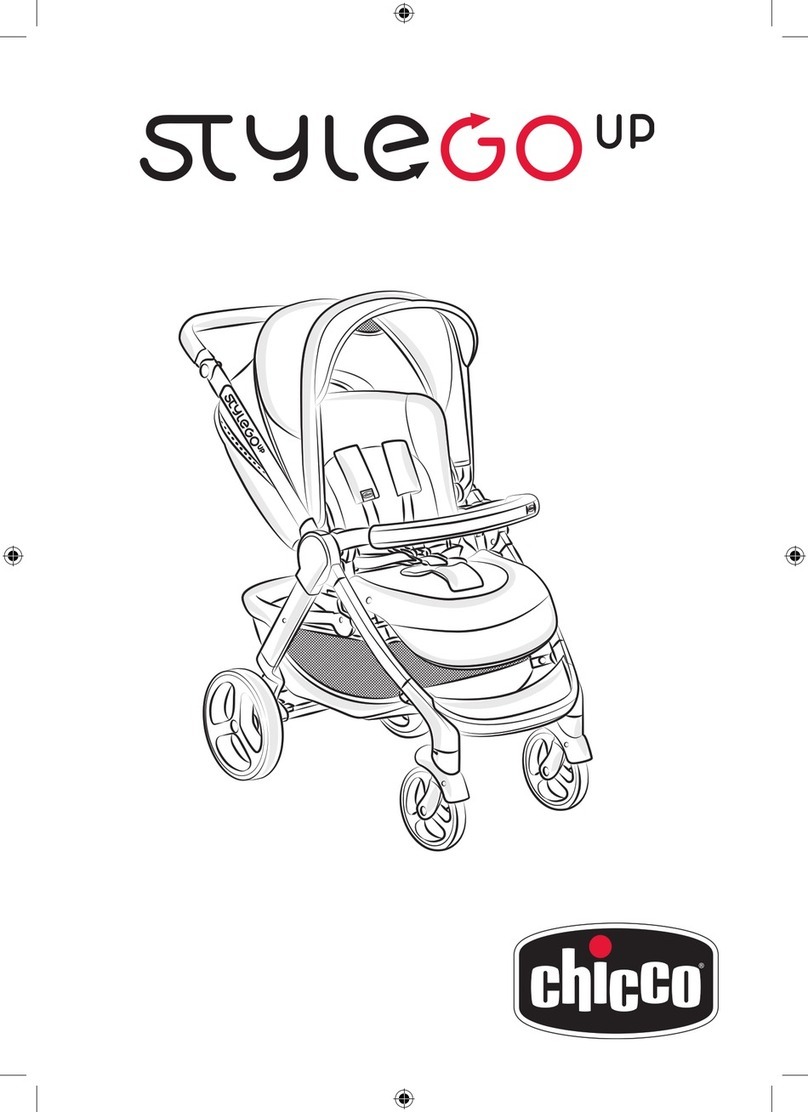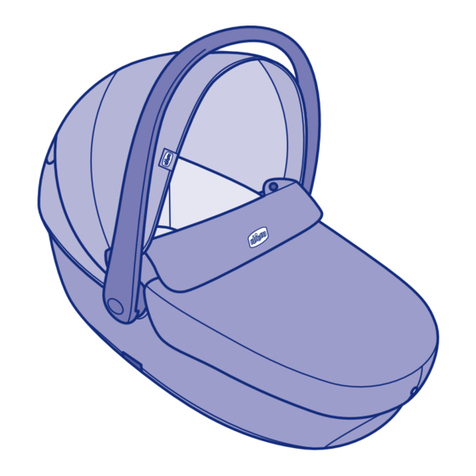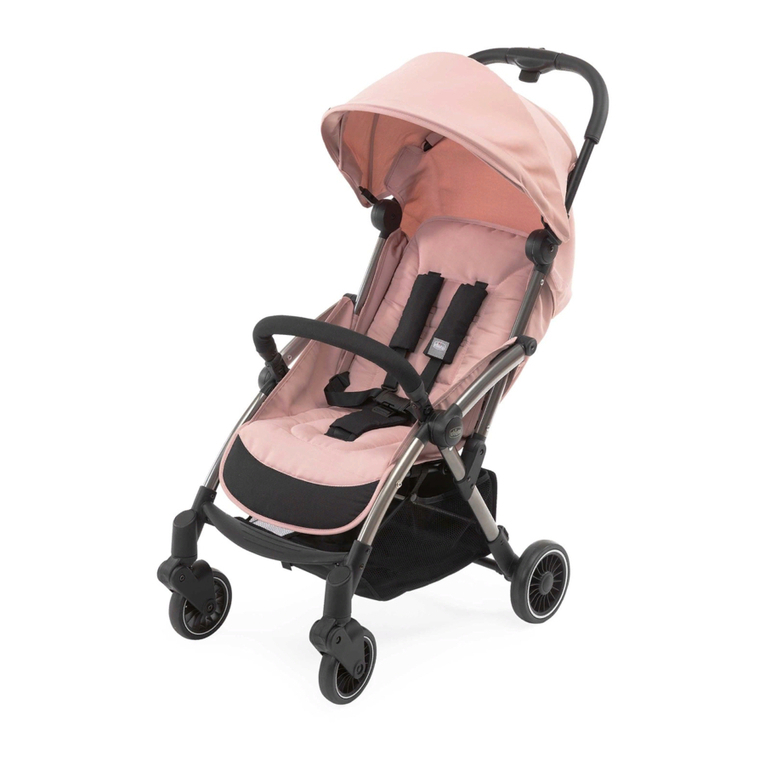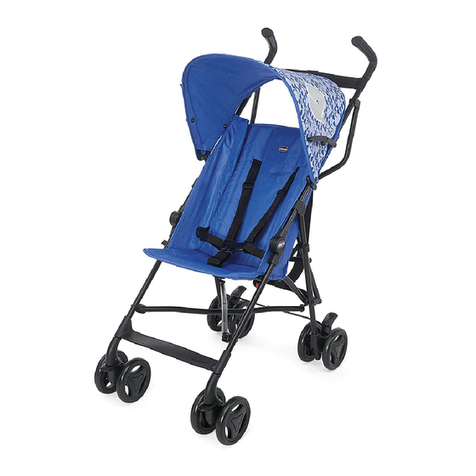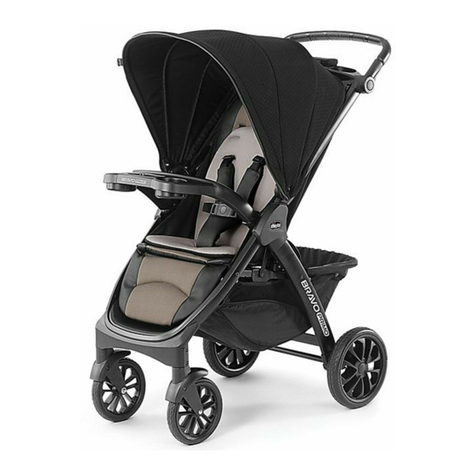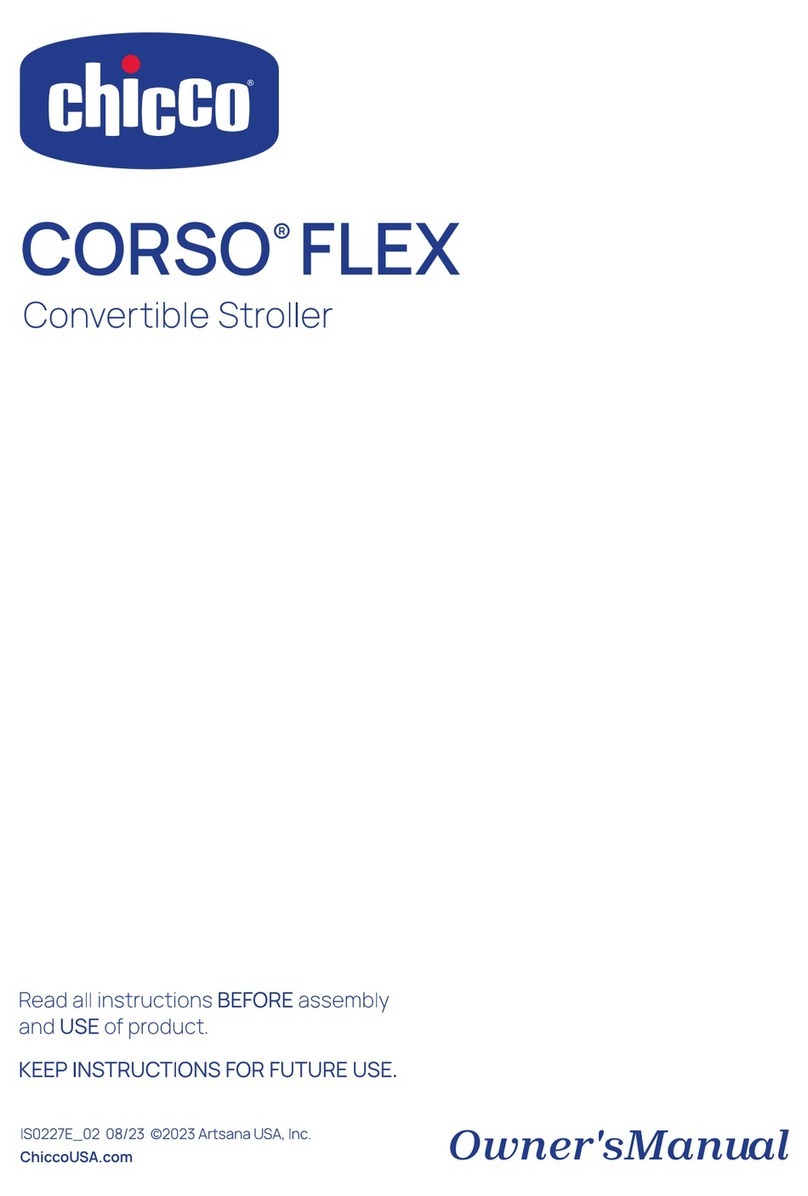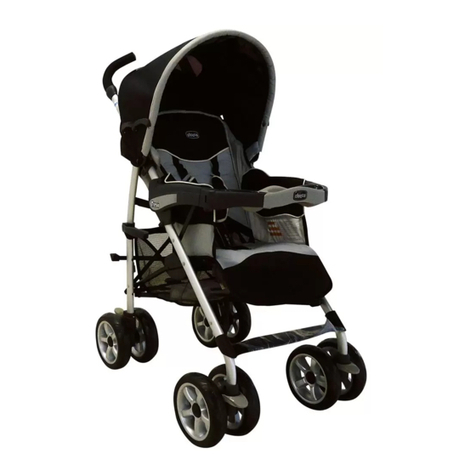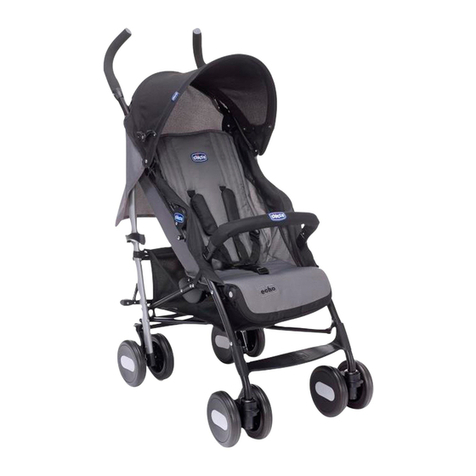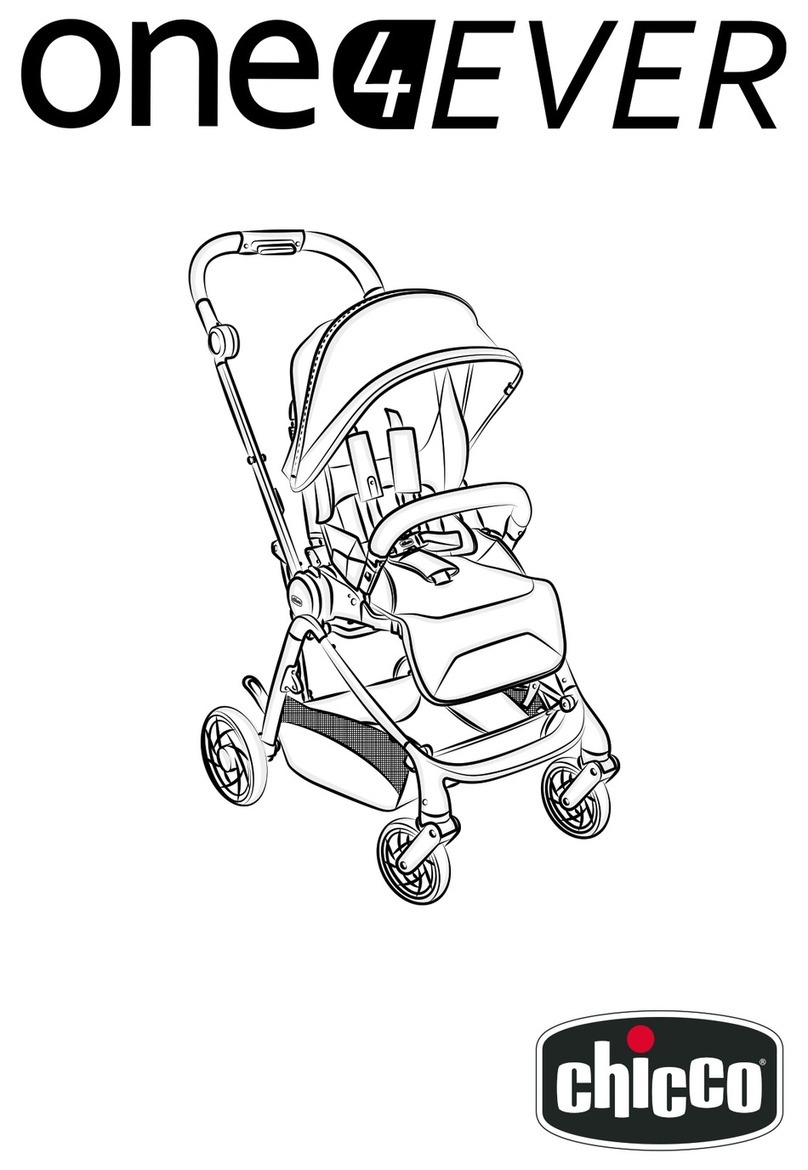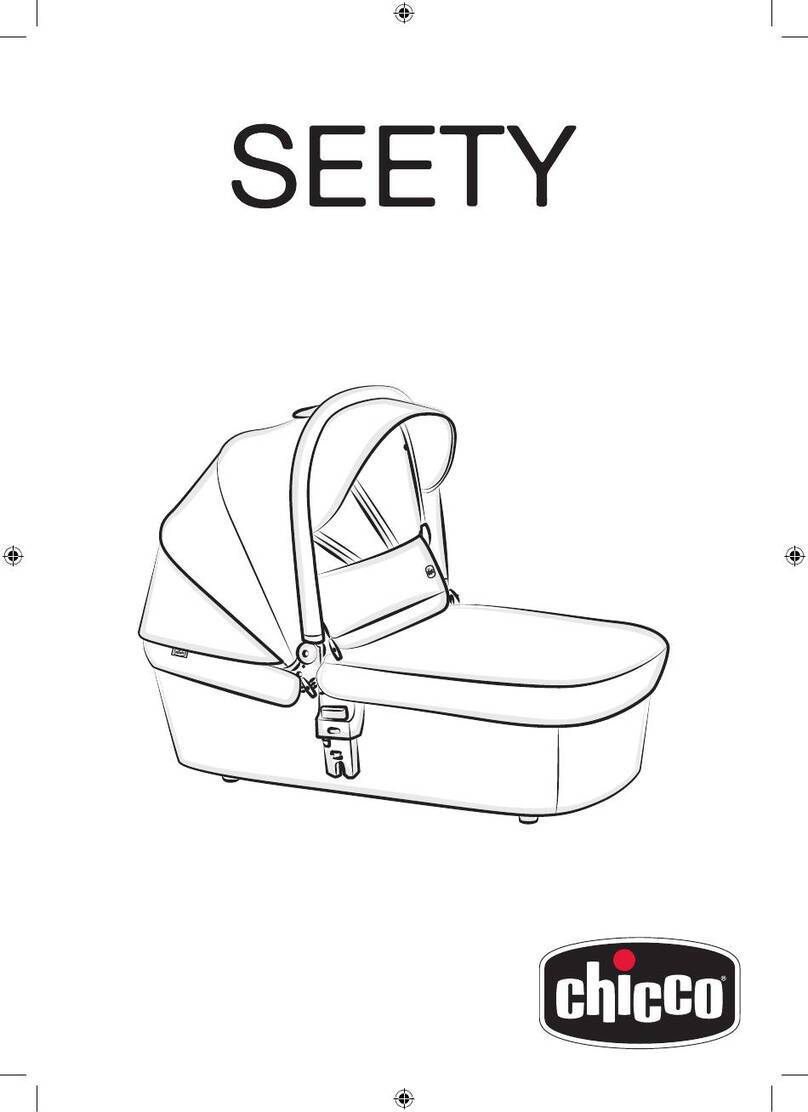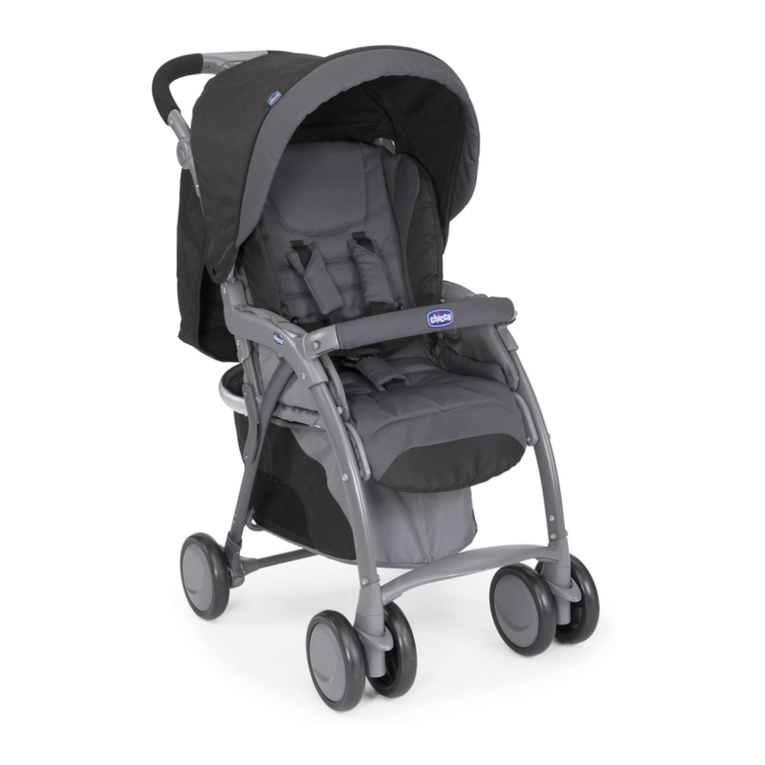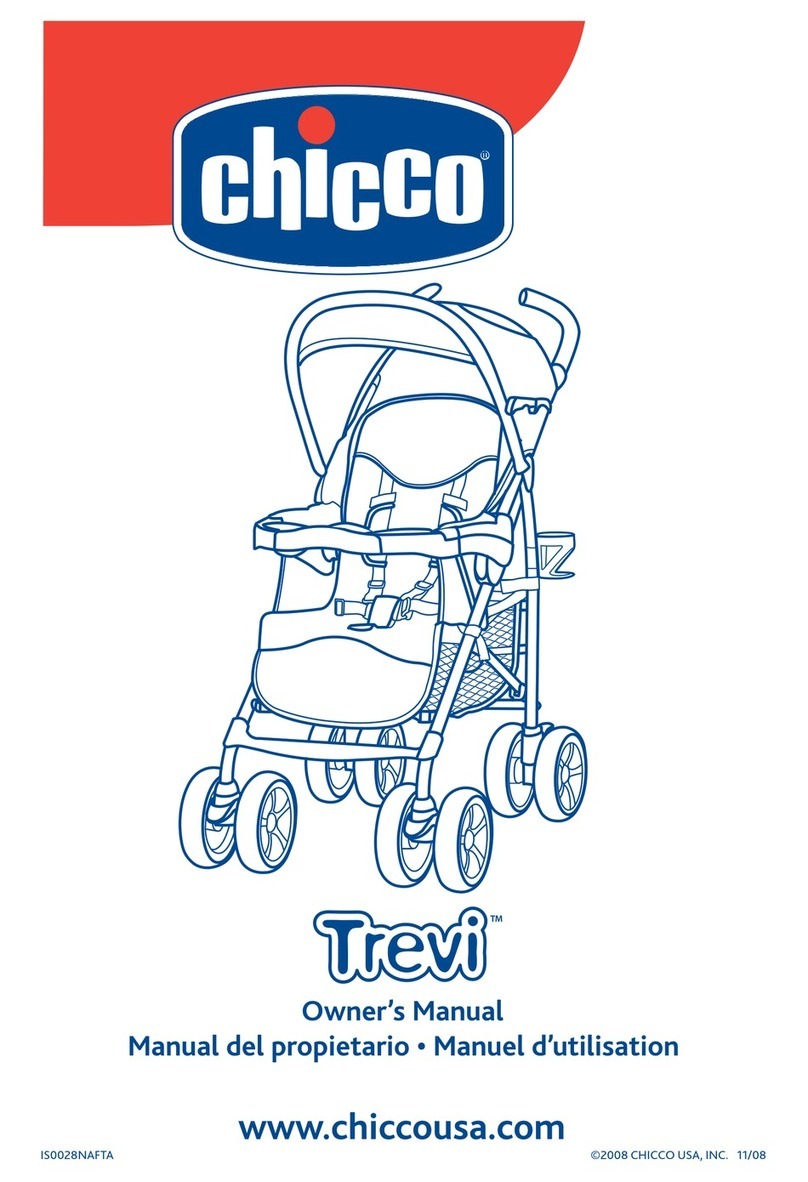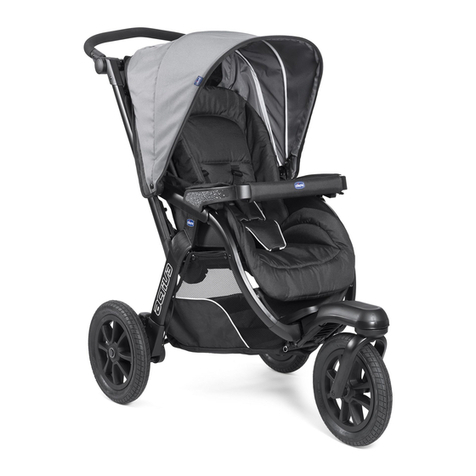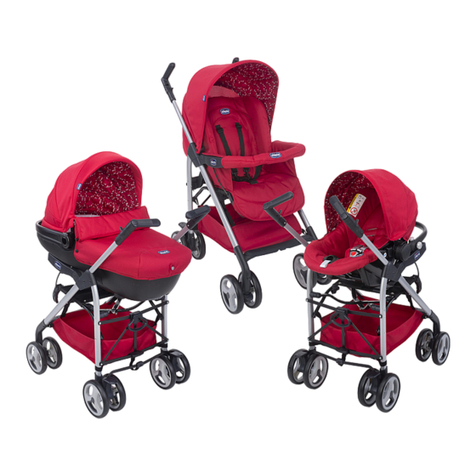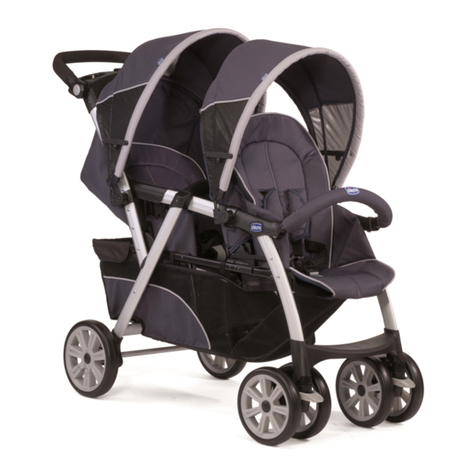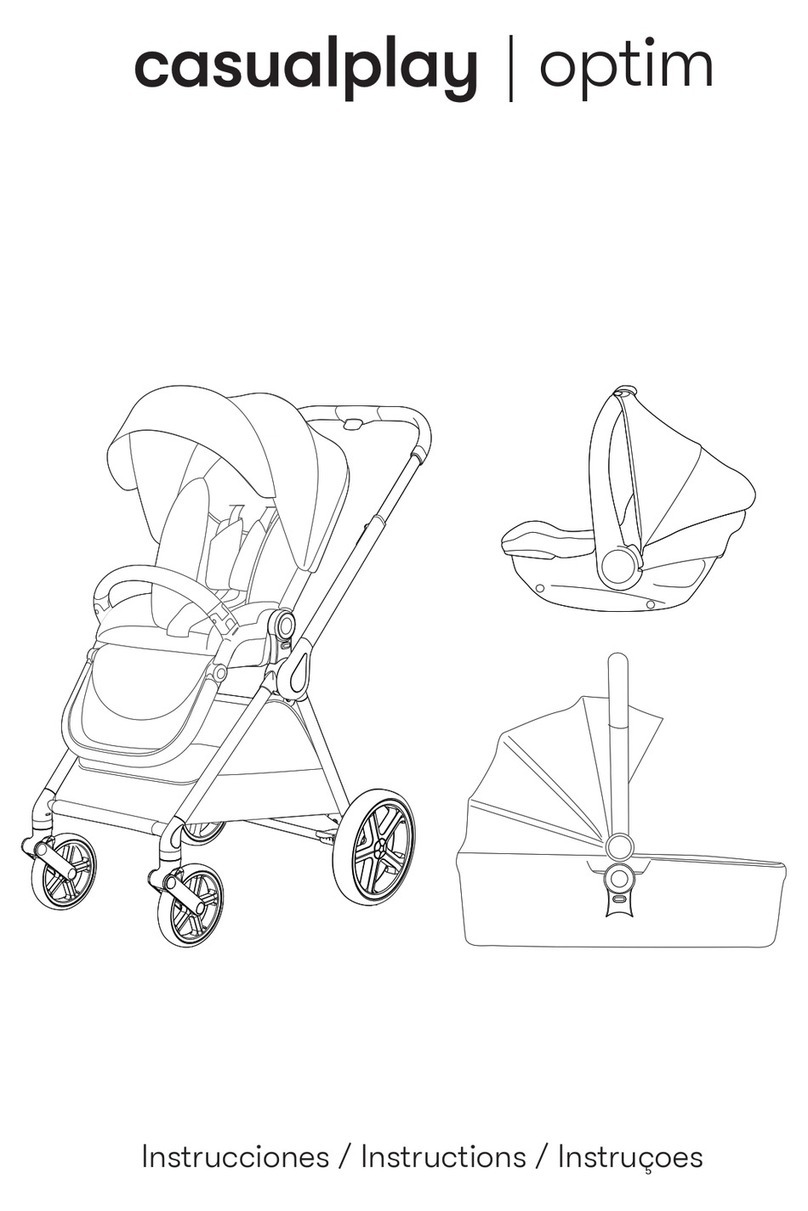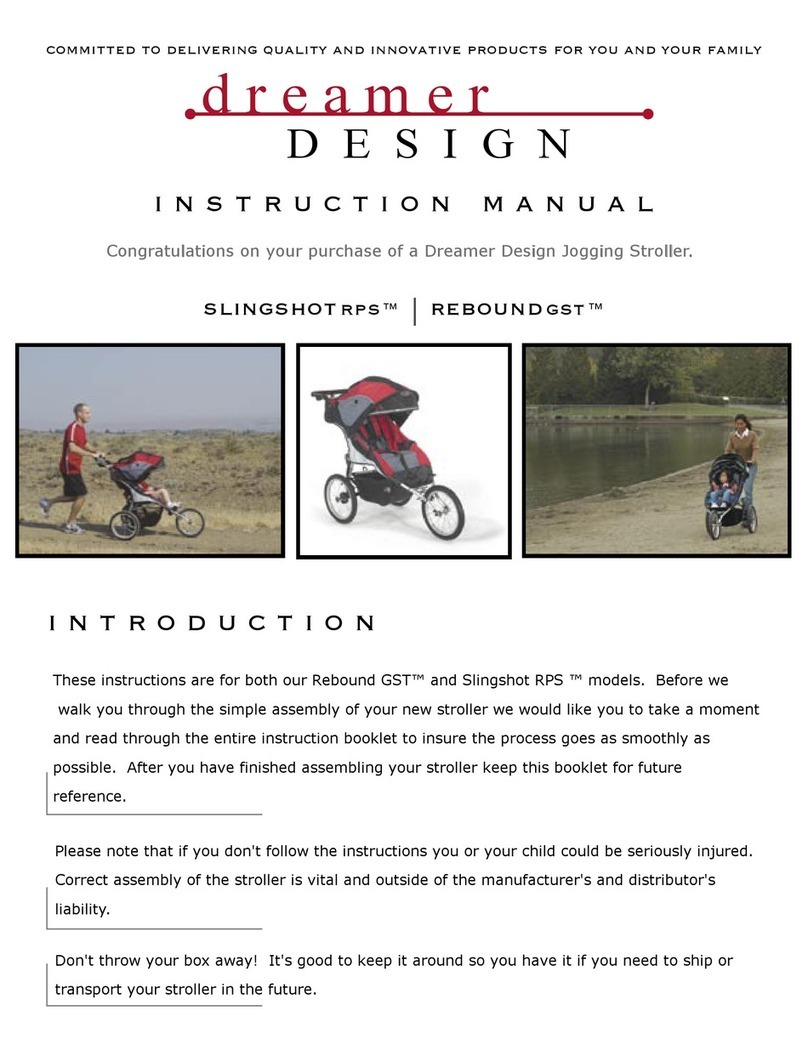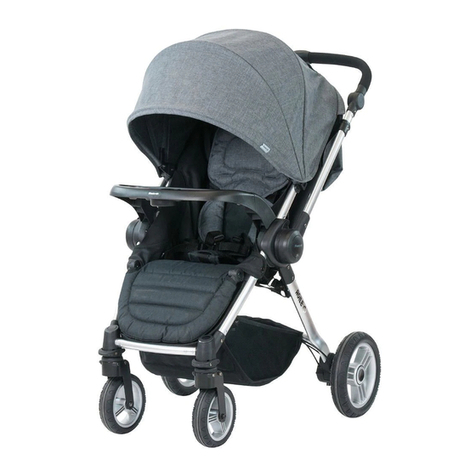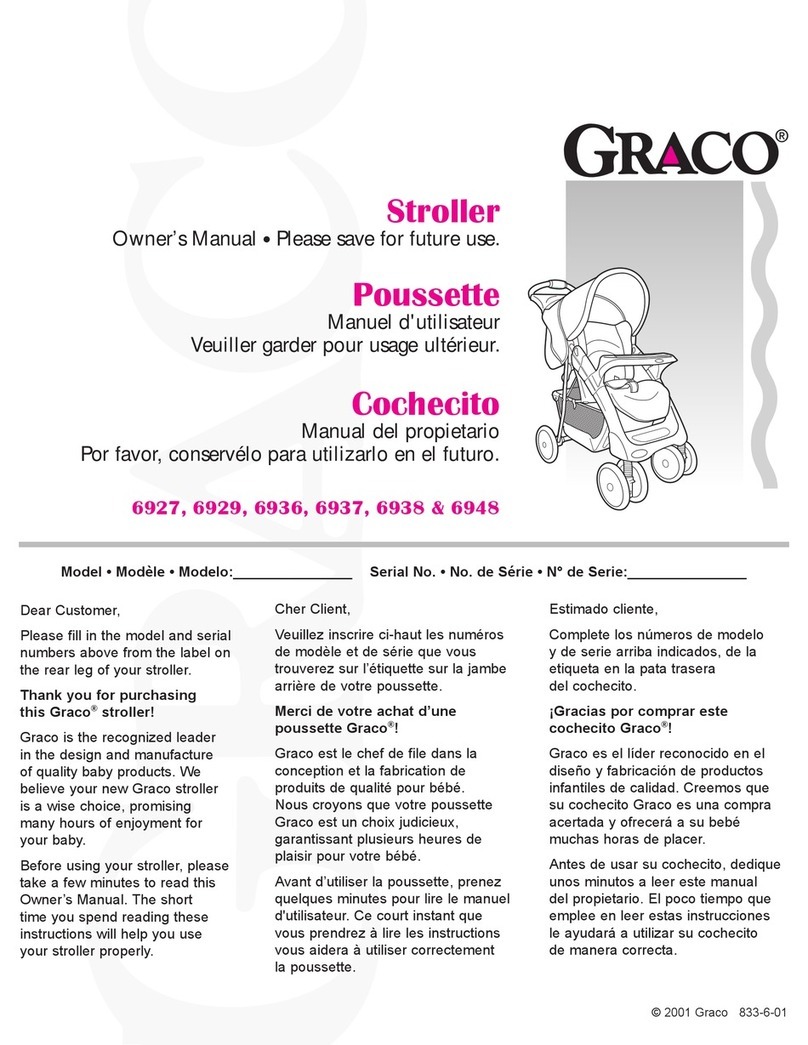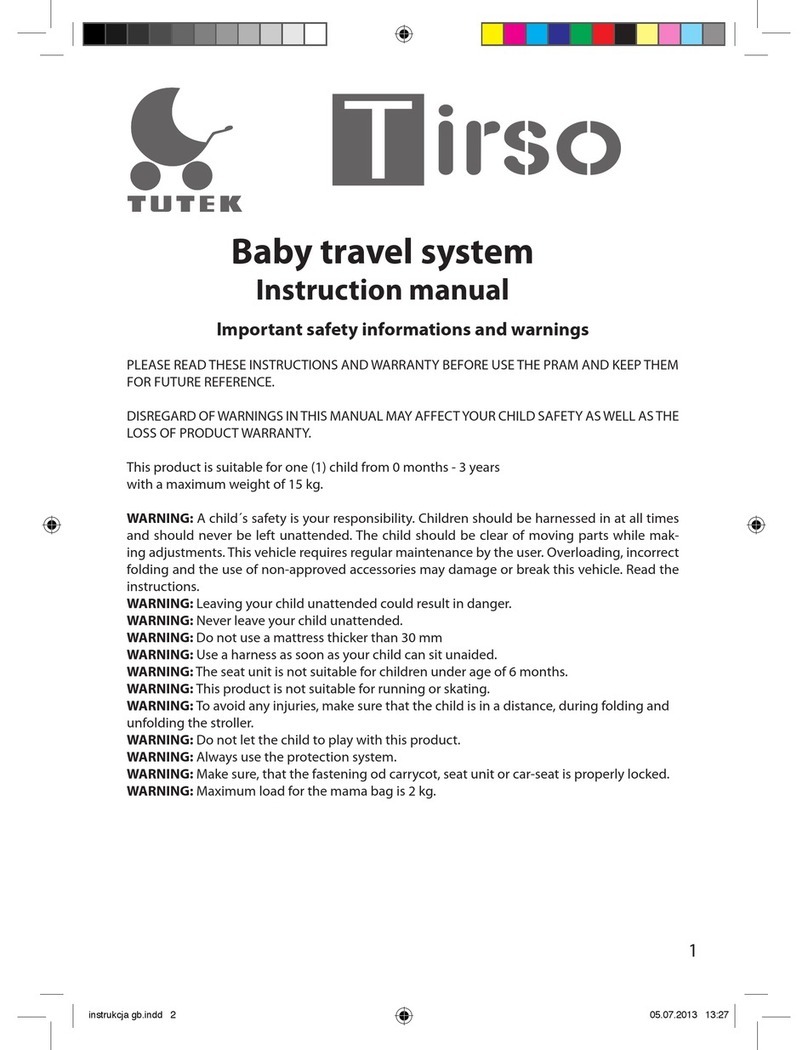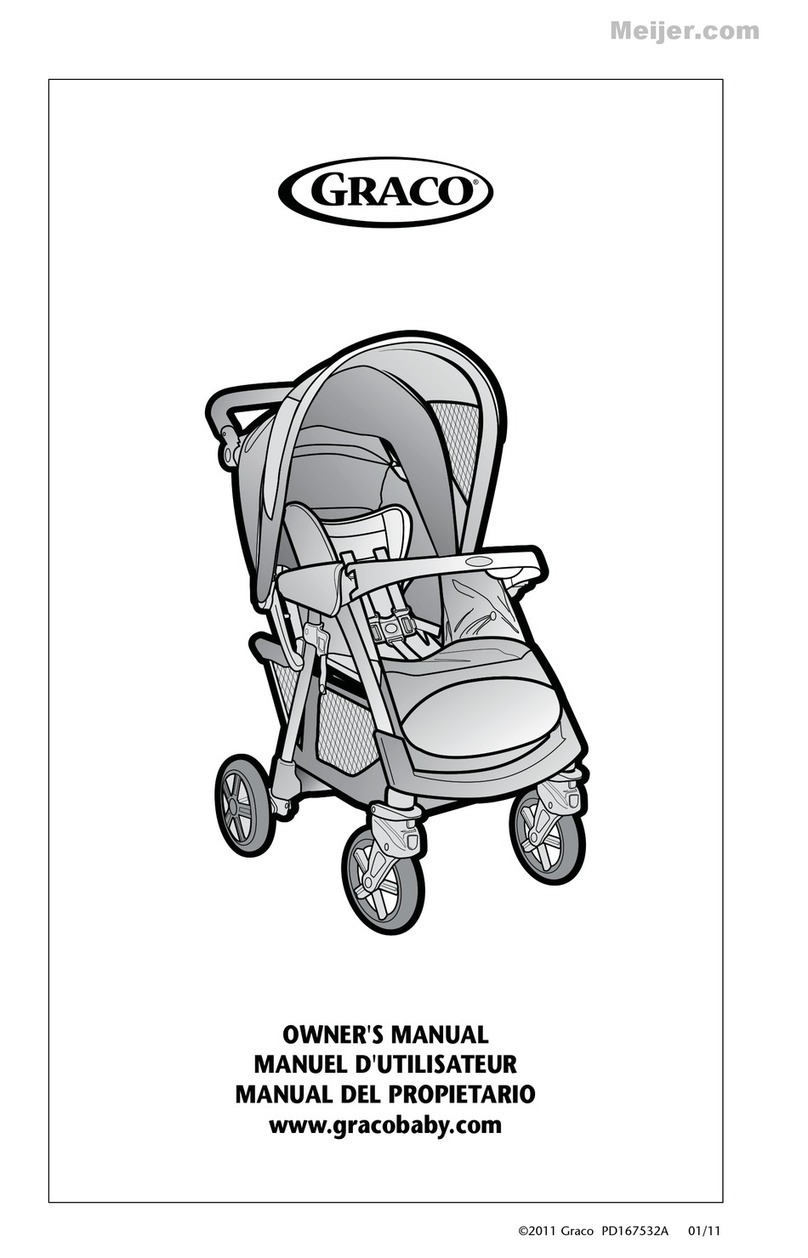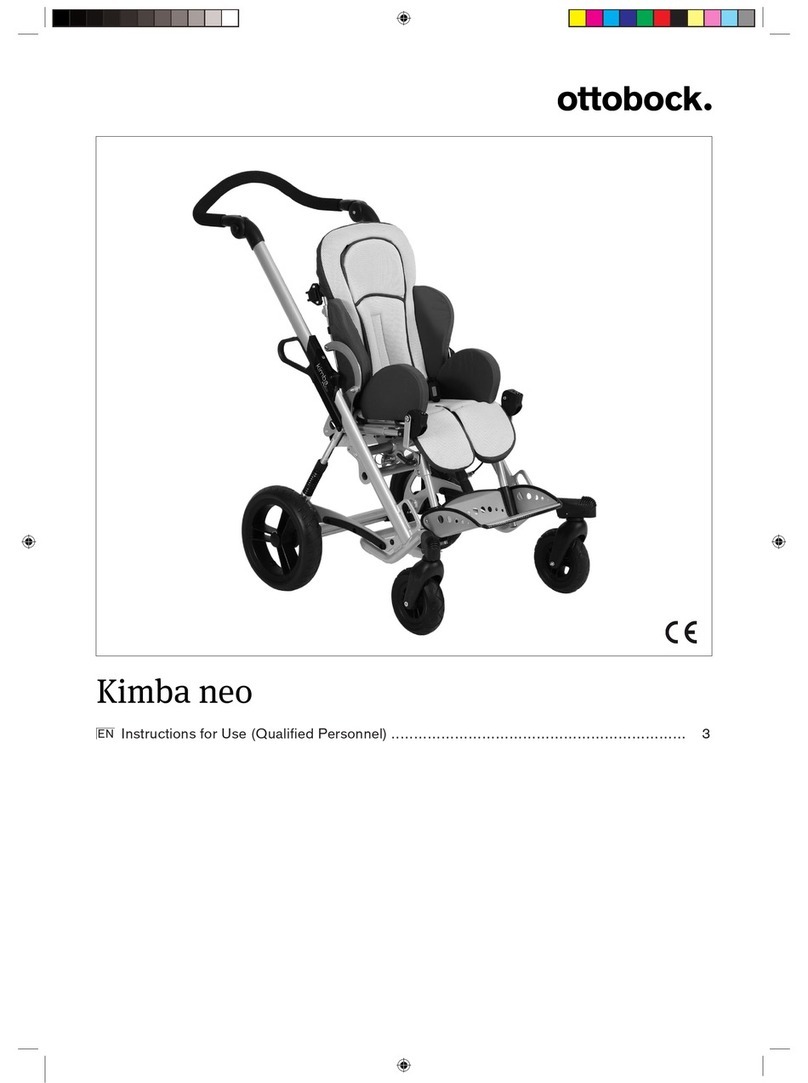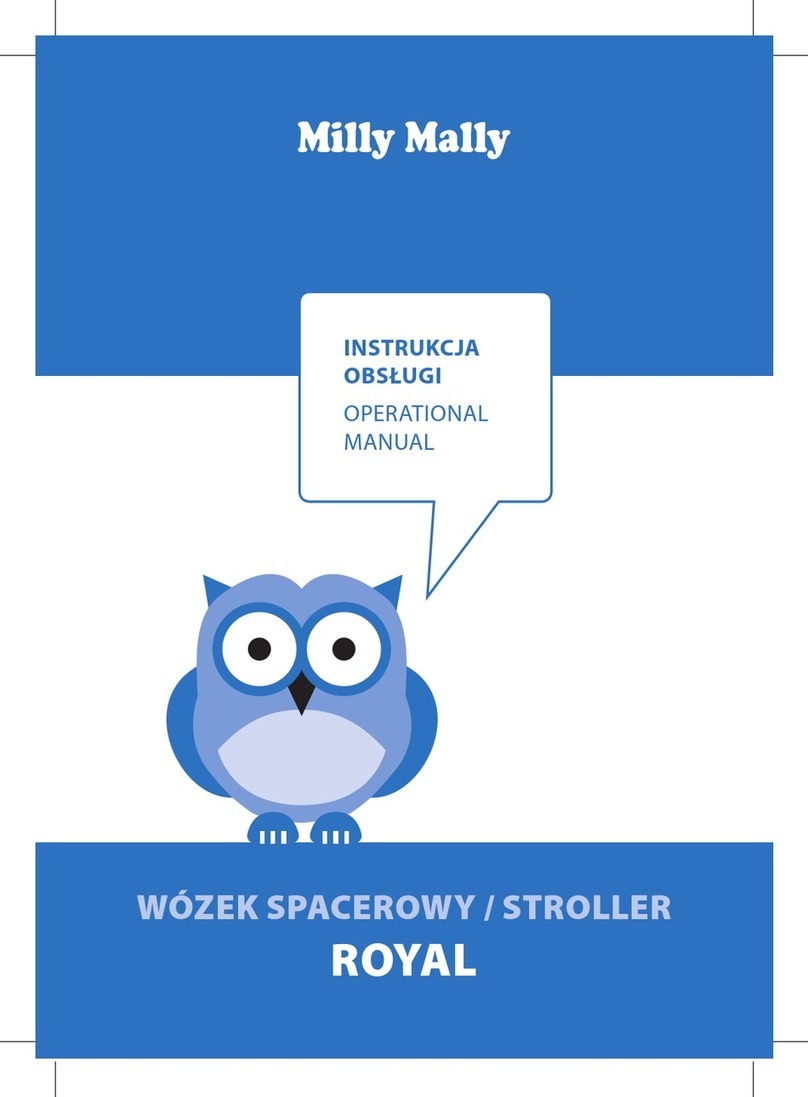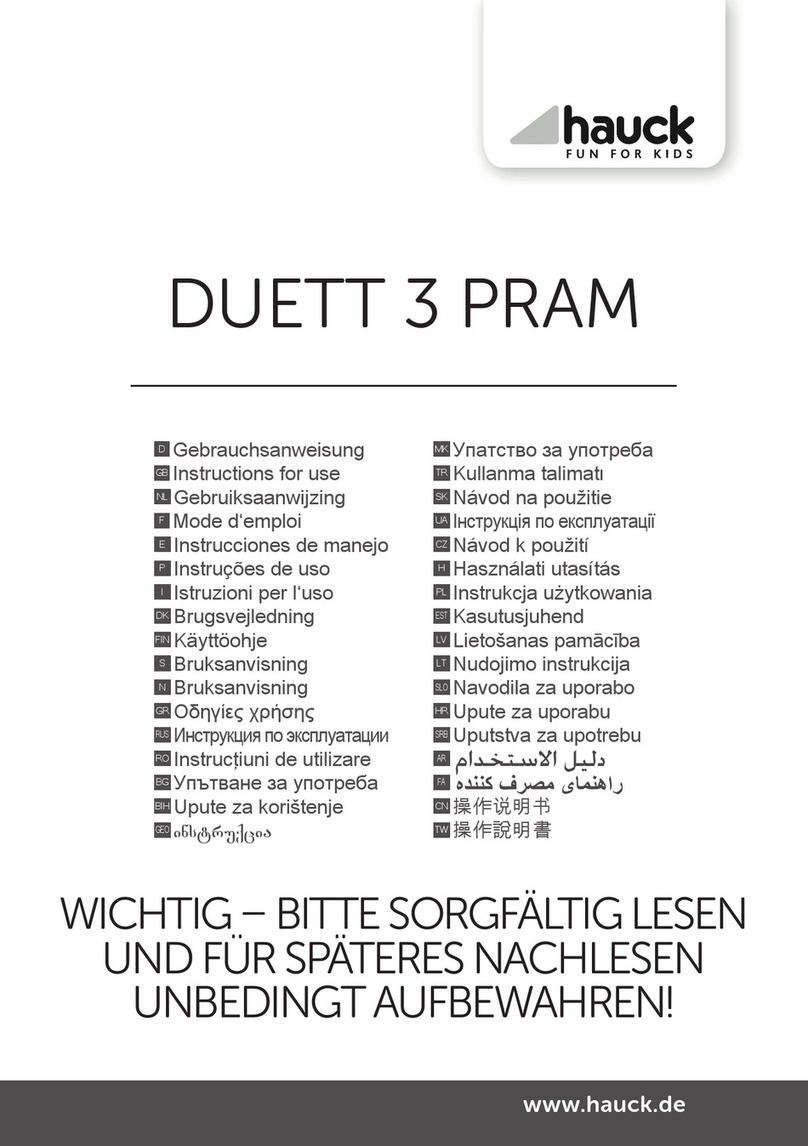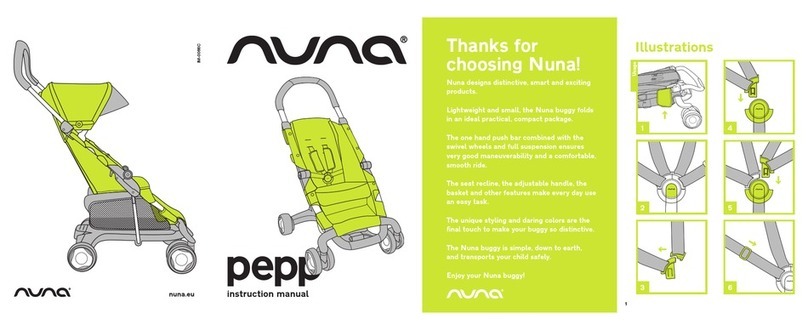
10
ISTRUZIONI GENERALI
APERTURA E PRIMO MONTAGGIO DEL PASSEGGINO
ATTENZIONE: Eettuare questa operazione facendo attenzione
che il bambino o altri bambini siano a debita distanza.
ATTENZIONE: Assicurarsi che in queste fasi le parti mobili del pas-
seggino non vengano a contatto con il corpo del bambino.
1. Impugnare il maniglione (Fig. 1) e tirare il passeggino verso l’alto
(Fig. 1A) no alla completa apertura della struttura (Fig. 1B).
ATTENZIONE: Prima dell’uso assicurarsi che il passeggino sia bloc-
cato in posizione aperta, vericando che il meccanismo sia eetti-
vamente bloccato.
2. Montare le ruote posteriori inserendo il perno della ruota nell’appo-
sito foro del tubo posteriore, no ad avvenuto bloccaggio (Fig. 2).
Per rimuoverle agire sul tasto localizzato su ciascuna ruota (Fig. 2A).
ATTENZIONE: Prima dell’uso accertarsi che tutte le ruote siano s-
sate correttamente.
3. Installare il manicotto paracolpi inserendolo nelle apposite fessu-
re posizionate sugli snodi del passeggino (Fig. 3). Se fosse neces-
sario rimuoverlo, premere il tasto su entrambi i lati (Fig. 3A).
ATTENZIONE: Il manicotto non deve essere utilizzato per sollevare
il prodotto con il bambino all’interno.
CESTELLO PORTAOGGETTI
Il cestello portaoggetti è già installato. Qualora fosse necessaria la
rimozione, seguire i passaggi descritti di seguito.
4. Il cestello è agganciato al telaio in più punti. Sganciare i 2 bottoni
automatici sulla parte posteriore del cestello (Fig. 4); rimuovere
i nastri laterali sulle gambe posteriori del passeggino (Fig. 4A);
sganciare i bottoni automatici presenti sotto la seduta (Fig. 4B);
aprire i velcri nella parte anteriore sotto il poggia piedi (Fig. 4C).
Per rimontare il cestello eettuare le stesse operazioni in senso in-
verso.
UTILIZZO DELLE CINTURE DI SICUREZZA
Il passeggino è dotato di sistema di ritenuta a cinque punti di an-
coraggio costituito da due spallacci, due asole di regolazione, una
cintura girovita ed uno spartigambe con bbia.
5. ATTENZIONE: Per l’utilizzo con bambini dalla nascita no a circa
6 mesi è necessario utilizzare gli spallacci facendoli prima passare
attraverso le due asole di regolazione (Fig. 5) e la cintura girovita
nelle asole verticali (Fig. 5A).
E’ possibile regolare l’altezza degli spallacci spostandoli nelle asole
presenti sullo schienale.
6. Dopo aver adagiato il bambino nel passeggino, allacciare le cintu-
re (Fig. 6) facendo passare le due forchette (A) attraverso la bbia
degli spallacci (B) e poi in quella dello spartigambe (C); regolare
l’altezza degli spallacci così da farli aderire alle spalle del bambino
(Fig.6A).
Assicurarsi che le cinture siano sempre allacciate correttamente. Per
sganciare la cintura, premere e tirare le forchette laterali.
ATTENZIONE: Per garantire la sicurezza del vostro bambino è indi-
spensabile utilizzare sempre le cinture di sicurezza.
Per assicurarsi che le cinture siano agganciate correttamente, una
volta messo il bambino e ssato, tirare con forza la parte nale delle
cinture.
REGOLAZIONE SCHIENALE
Lo schienale è regolabile in 3 posizioni.
7. Per reclinare lo schienale sollevare verso l’alto la maniglia di rego-
lazione posta sul retro dello stesso (Fig. 7). Per alzare lo schienale è
suciente sollevarlo no alla posizione desiderata.
ATTENZIONE: Con il peso del bambino le operazioni possono ri-
sultare più dicoltose.
FRENI POSTERIORI
Le ruote posteriori sono dotate di freni gemellati che permettono
di operare contemporaneamente su entrambe le ruote posteriori
agendo sul tubo di supporto.
8. Per frenare il passeggino, premere verso il basso il pedale posto
centralmente (Fig. 8). Per sbloccare il sistema frenante, premere il
pedale nell’altro senso (Fig. 8A).
CAPOTTA PARASOLE
La capotte è già installata sul passeggino.
9. Per aprire e regolare la capotta agire sull’archetto anteriore (Fig. 9).
E’ possibile estendere la capotta aprendo la cerniera (Fig. 9A-9B).
Agganciare la parte posteriore della capotte allo schienale con
due bottoni automatici (Fig. 9C) e i velcri laterali (Fig. 9D). Qualora
si volesse rimuovere la capotte dal passeggino, aprire la zip che
avvolge il tubo sopra lo schienale (Fig. 9E) e slare su entrambi i
lati l’archetto dallo snodo a cui è agganciato premendo il punto
indicato nella gura 9F e, contemporaneamente tirare verso l’alto.
Concludere l’operazione sganciando i due bottoni posizionati sul
retro dello schienale.
POGGIAGAMBE REGOLABILE
E’possibile utilizzare il poggiagambe in 2 posizioni.
10. Per utilizzare il poggiagambe in posizione orizzontale è su-
ciente spingerlo verso l’alto. Per abbassarlo agire sul tasto posto
sotto il poggiagambe (Fig. 10).
SVESTIZIONE E VESTIZIONE DEL PASSEGGINO
Per rimuovere il tessile della seduta seguire i passaggi descritti di
seguito:
11. Staccare tutti i velcri e i bottoni automatici che legano lo schie-
nale alla capotte (Fig. 11A) e, su entrambi i lati, slare i nastri dagli
agganci plastici che legano lo schienale al tubo impugnatura del
telaio (Fig. 11B).
12. Sui laterali della seduta, rimuovere il velcro (Fig. 12) e slare la lin-
guetta tessile dall’anello plastico posto sulla struttura (Fig. 12A).
Eettuare tale operazione su entrambi i lati del passeggino.
13. Slare la parte tessile del poggiagambe dalla struttura (Fig. 13)
e, conseguentemente, il nastro elastico (Fig. 13A). Staccare il vel-
cro presente sul nastro elastico, posto sotto la seduta, e slare il
nastro stesso dalla bbia (Fig. 13B). Rimuovere la tasca dal tasto
di regolazione dello schienale e tirare tutto il tessile verso l’alto
(Fig. 13C - 13D).
Per vestire il passeggino eseguire le stesse operazioni in senso in-
verso.
CHIUSURA DEL PASSEGGINO
ATTENZIONE: Eettuare questa operazione facendo attenzione
che il bambino ed eventuali altri bambini siano a debita distanza.
Assicurarsi che in queste fasi le parti mobili del passeggino non ven-
gano a contatto con il corpo del bambino.
Prima della chiusura vericare che il cestello portaoggetti sia vuoto.
Il passeggino è dotato di comando di chiusura utilizzabile con una
sola mano.
14. Per chiudere il passeggino, spingere il cursore “A” verso sinistra
e premere contemporaneamente il tasto “B” (Fig. 14); spingere
il maniglione verso il basso ed il passeggino si chiuderà in au-
tomatico. Il passeggino si bloccherà automaticamente in posi-
zione chiusa. Il passeggino, una volta chiuso, sta in piedi da solo
(Fig. 14A-B). Per aumentare la compattezza del prodotto da chiu-
so è possibile ruotare il manicotto paracolpi verso il maniglione
(Fig. 14C).
ACCESSORI
ATTENZIONE: Gli accessori descritti qui nel seguito possono non
essere presenti su alcune versioni del prodotto. Leggere attenta-
mente le istruzioni relative agli accessori presenti nella congura-
zione da Voi acquistata.
KIT SPALLACCI E SPARTIGAMBE
Il passeggino è dotato di spallacci imbottiti e di un morbido spar-
tigambe, in grado di assicurare la sicurezza e la comodità del bam-
bino.
15. Inlare gli spallacci nelle bretelle (Fig. 15) e far passare lo sparti-
gambe nell’apposita imbottitura (Fig. 15A).
ATTENZIONE: Regolare, se necessario, la larghezza del girovita
agendo sulle bbie.
ATTENZIONE: Per garantire la sicurezza del vostro bambino è indi-
spensabile usare sempre le cinture di sicurezza.

